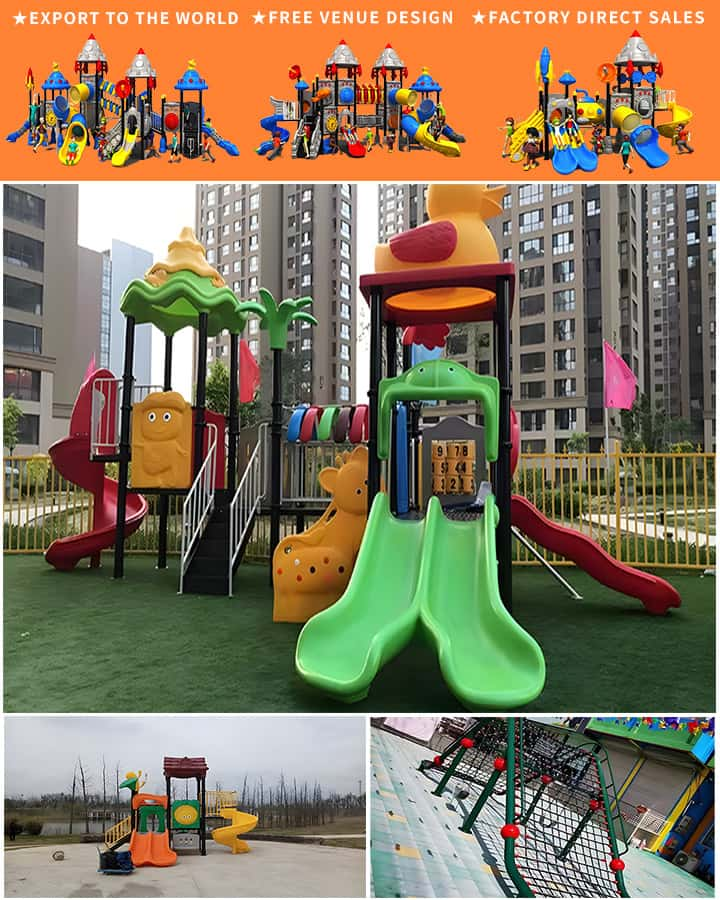Creating an engaging and safe playground is an essential aspect of any school’s infrastructure. In Ireland, where outdoor play is cherished as a fundamental part of childhood development, the right playground equipment can make all the difference. This comprehensive guide explores the various types of playground equipment suitable for schools in Ireland, emphasizing safety, inclusivity, and fun.
The Importance of Playgrounds in Schools
Playgrounds are more than just places for children to expend energy; they are vital spaces for physical development, social interaction, and cognitive growth. Quality playground equipment encourages children to be active, fostering healthy habits from a young age. Moreover, well-designed playgrounds can enhance a school’s appeal, making it an attractive choice for both students and parents.
Types of Playground Equipment
1. Climbing Frames
Climbing frames offer versatile structures that can include ladders, slides, and ropes, providing multiple ways for children to engage physically. They help develop motor skills, strength, and coordination. Climbing frames come in various shapes and sizes, suitable for different age groups. For younger children, simpler climbing frames with gentle slopes are recommended, while older kids can enjoy more complex structures with higher platforms and challenging routes.
2. Slides

Slides are classic playground staples loved by children of all ages. In Ireland, where weather can be unpredictable, opting for weather-resistant materials like fiberglass or recycled plastic ensures longevity. Slides can be standalone or integrated into larger units like climbing frames. Wave slides, spiral slides, and straight slides provide different experiences, keeping the excitement levels high.
3. Swings
Swings are timeless pieces of equipment promoting fun and movement. Traditional swings, tire swings, and infant swings cater to diverse age groups and abilities. Installing a variety of swings ensures that all children can participate, fostering inclusiveness. Safety features, such as non-slip seats and secure harnesses for younger children, are crucial in preventing accidents.
4. Seesaws and Rockers
Seesaws and rockers encourage cooperative play and teach balance and coordination. These simple yet effective pieces of equipment can be enjoyed by pairs of children, helping to build social skills and friendships. For inclusivity, consider wheelchair-accessible seesaws that allow all children to join in on the fun.
5. Sandplay Equipment
Sandplay areas stimulate creativity and fine motor skills. Digging, building sandcastles, and sculpting sand shapes enhance sensory experiences and hand-eye coordination. Incorporating buckets, shovels, and sand molds provides endless opportunities for imaginative play. Ensure these areas are covered or positioned to avoid waterlogging during Ireland’s frequent rains.
6. Interactive Play Panels
Interactive panels add an educational element to playtime. These panels feature games, puzzles, and activities that promote cognitive development and problem-solving skills. Incorporating them into playground design makes the most of limited space and offers varied play options for children who may not be inclined towards physically demanding activities.
Safety Considerations
Safety is paramount when selecting playground equipment for schools in Ireland. Compliance with safety standards, such as EN 1176 and EN 1177, is mandatory. These regulations cover aspects including impact absorbency of surfaces, stability of structures, and absence of pinch points or entrapment hazards. Regular maintenance checks and age-appropriate equipment installation are also key to ensuring ongoing safety.
Inclusive Playground Design
An inclusive playground accommodates children of all abilities. Features like wheelchair-accessible ramps, transfer stations, and sensory-rich elements ensure that every child can play together. Multi-use play equipment designed for various physical challenges allows children with different needs to engage fully, fostering a sense of belonging and community.
Conclusion
Investing in quality playground equipment for schools in Ireland is an investment in the health, happiness, and development of future generations. By carefully considering types of equipment, safety features, and inclusivity, schools can create dynamic, inviting play spaces that inspire children to be active, creative, and socially connected. As we continue to prioritize play in educational environments, we contribute to nurturing well-rounded, resilient individuals ready to thrive in all facets of life.




